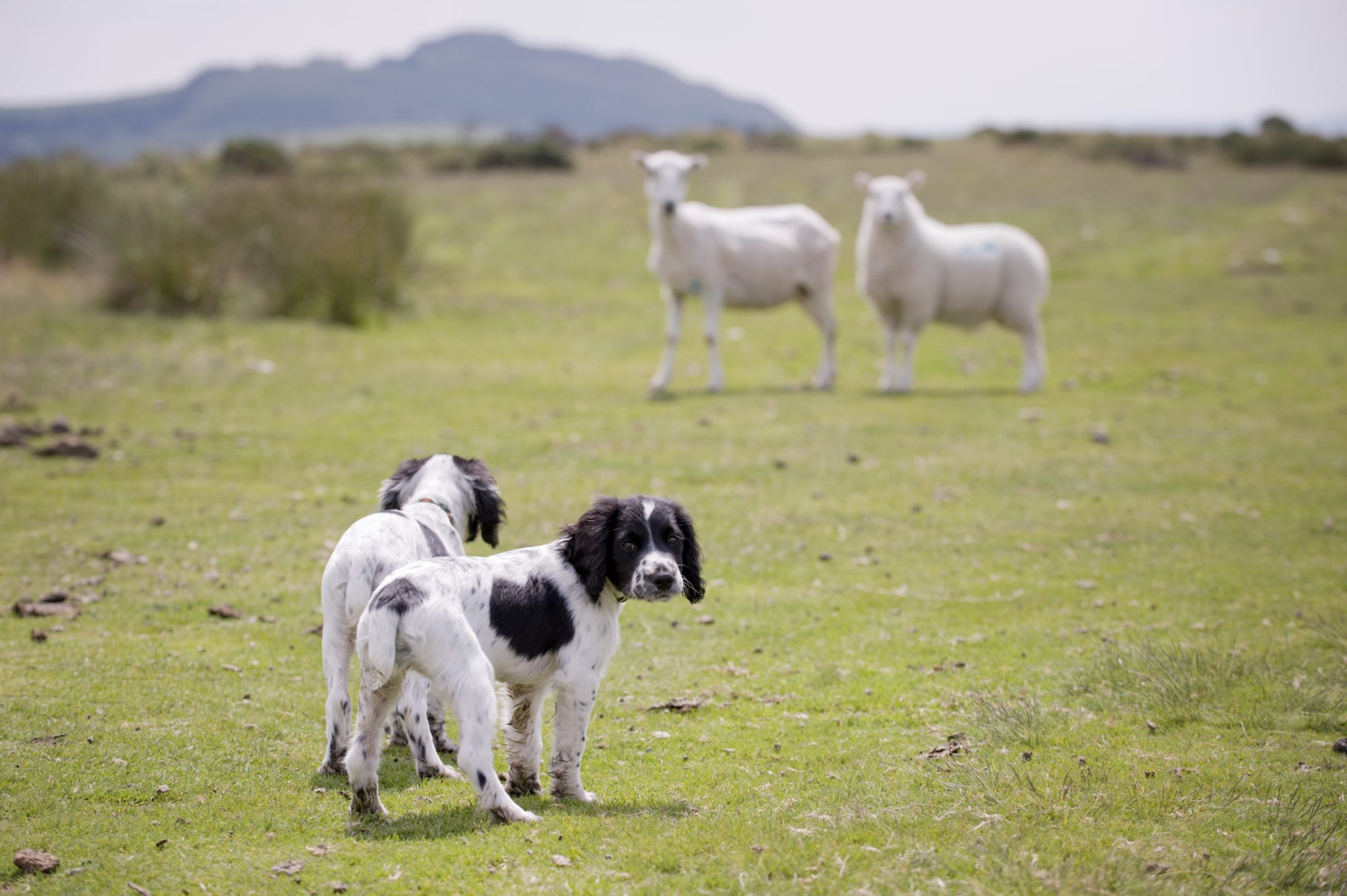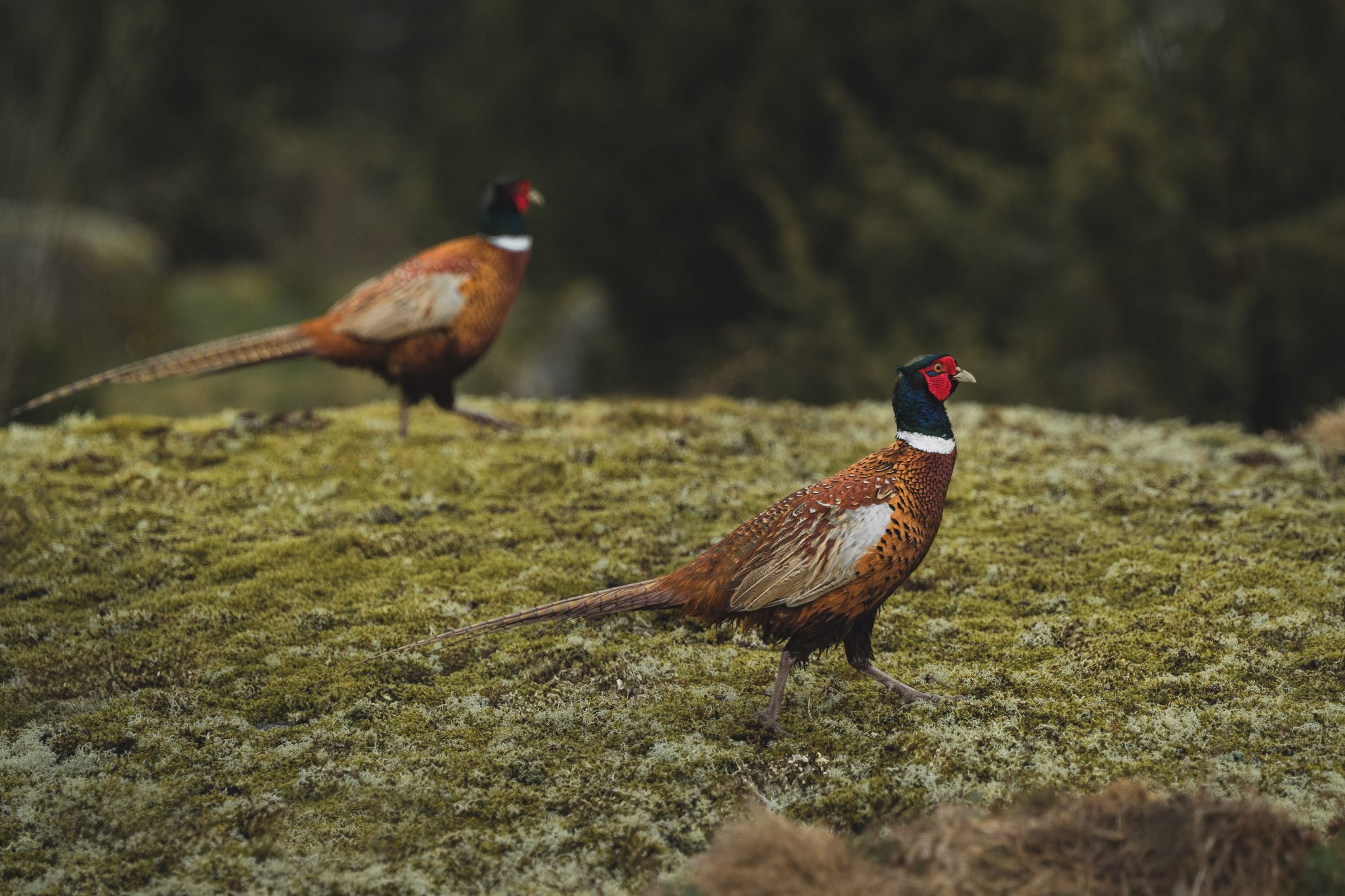Win CENS ProFlex DX5 earplugs worth £1,149 – enter here
Foxing on the foreshore
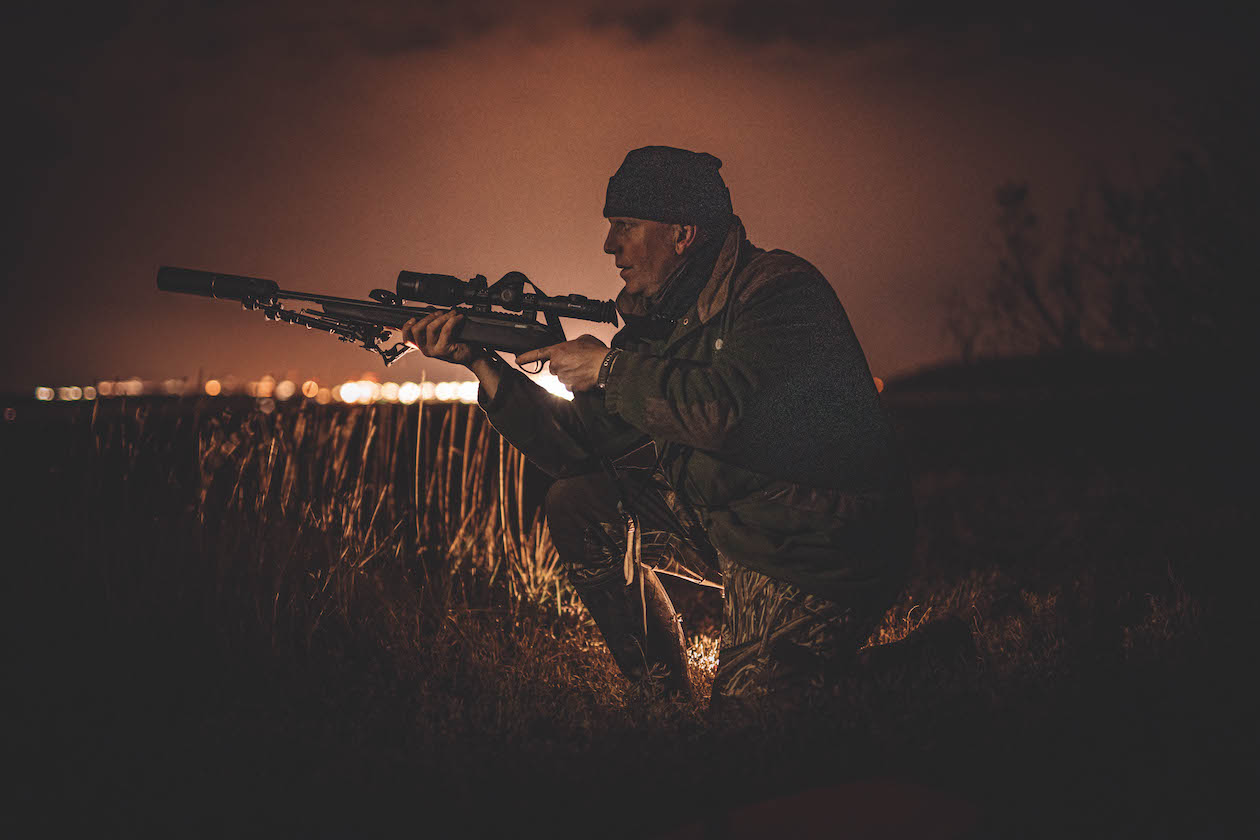 fox control takes time and patience.
fox control takes time and patience.
In 1999 and 2000, I was fortunate to spend many months in the jungles of Brunei and Belize as part of my Royal Marine training. Both were wonderful environments in which to soldier. For the previous two years, I’d spent most of my time wet and cold — on Dartmoor, the Brecon Beacons and in Scotland.
Now, at least, I was only wet; it’s rarely cold in a tropical rainforest and I was never thirsty. With movement beneath the canopy very limited, it was also a welcome opportunity to catch up on sleep and I found a hammock to be a comfortable place to recoup after the rigours of the commando course.
It was during these times that fellow trainees and I were taught the skills of tracking by some inspiring Gurkha instructors. We knew that our unfamiliarity with the environment would mean we left obvious signs of our positions and our movements. Understanding this would make us harder to ambush or to trail and would help us surprise our enemies. We were taught to ‘tune in’ to the trees and were encouraged simply to stay still and observe for long periods of time while our senses became familiar with the terrain.
Slowly we became more like the native Iban people of Sarawak. We became able to move undetected and to follow trails. We learned the tactics, techniques and procedures of jungle combat. Those were some of the best months of my career and, although the terrains were very different, they were exceptionally helpful in preparing for operations in Afghanistan and Iraq. Good fieldcraft is good fieldcraft whether it’s in the jungle, the mountains or the desert.
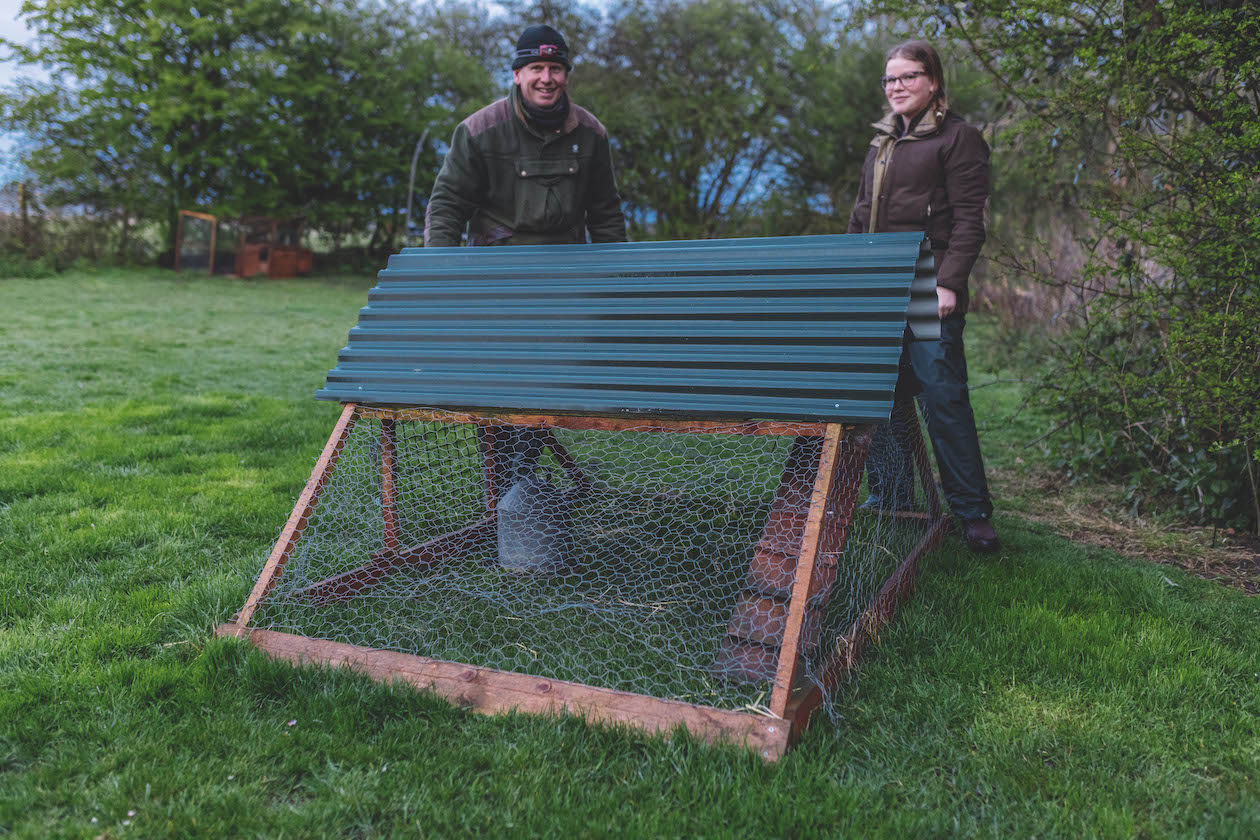
The home-made hen run is not as impregnable as the Garnhams had hoped
Bold and hungry
I was recently reminded of some of the tracking skills I learned. Through the gentle mists of a coffee and the morning paper came the shouts of my daughter Liz: “Fox! Fox! It’s got a bantam.” I looked up just in time to see Reynard disappearing into the woods at the edge of our garden with a limp hen in its jaws. Somehow it had managed to penetrate our newly built hen run without alerting the dogs and had dragged out one of Liz’s prized bantams. Where it had succeeded once, I knew it would try again. It was mid-morning so either the fox was bold or it was hungry or both.
We let Scout, our labrador, go in the hope that she might intercept the fox, show us its route and perhaps even force it to drop the hen, which may only have been playing dead. Scout took us through the trees on a linear route for about 100 yards but lost scent at this point. The fleeting chance to save the hen had gone. But it offered a real opportunity to spend some time with Liz, looking at the natural world around us.
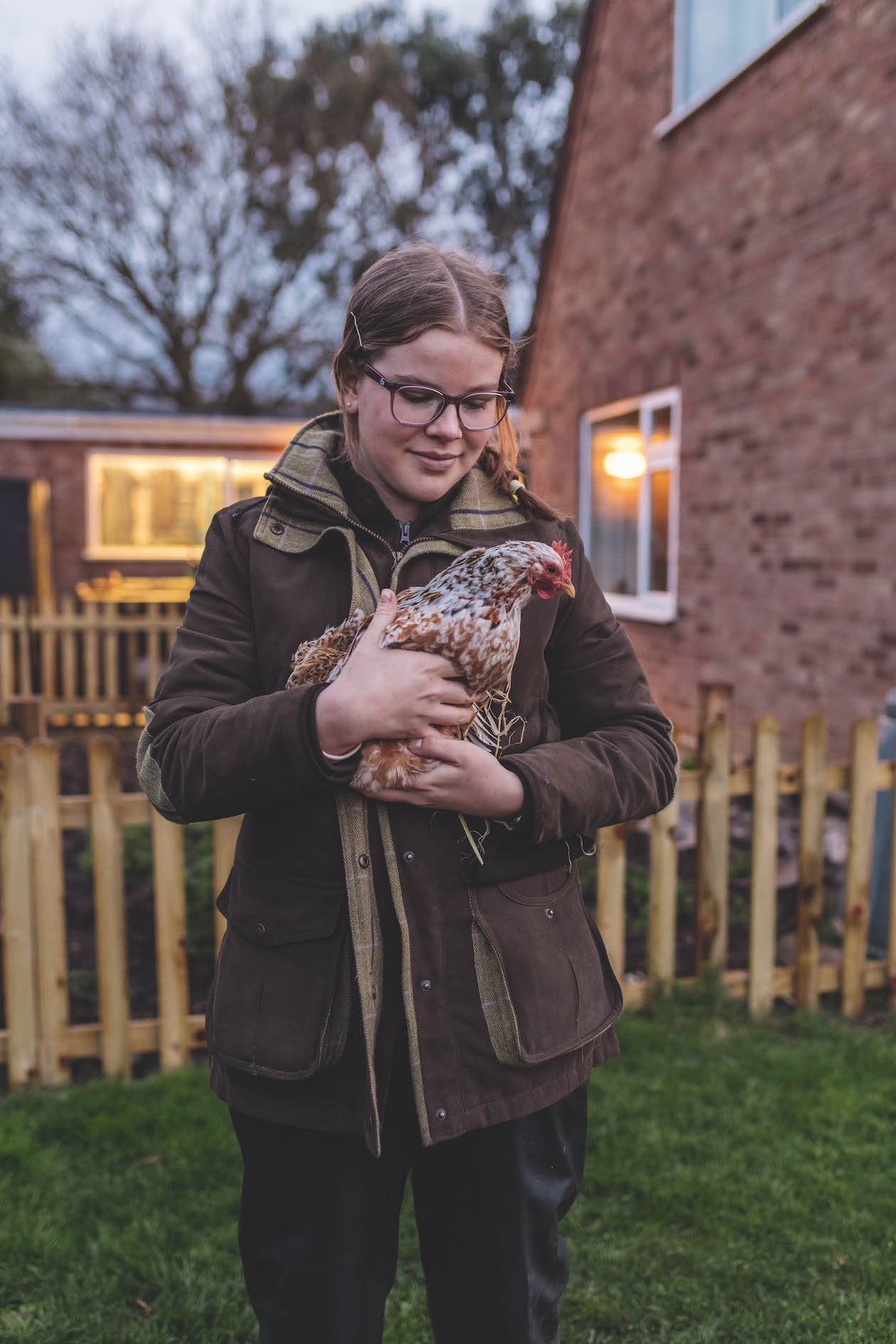
Liz is protective of her bantams
We changed into more appropriate clothes for a protracted pursuit and set out again in the afternoon to see if we could make sense of the thieving fox’s movements. A pile of feathers in the orchard didn’t bode well, but they weren’t the bantam’s. They seemed to have been plucked rather than ripped and spat. We surmised this could have been the work of a bird of prey.
Further on, we found a neatly grouped pile of stones — each one about the size of a walnut — and clearly having been collected and left. We speculated that these could have been collected by a grey squirrel: a strange labour but one I’ve heard to be relatively common.
Back in the woods, the pungent scent of Reynard was clear. It was exciting to think that we must be close. A fresh scat with a pointed end, deliberately positioned on a breeze block, was certainly fox. It had telltale fur and bones but not the feathers of our hen. The brick had once been used to support a jack for repairing a puncture during coppicing.
Now it offered a point to mark a territory. We cast around using a 360-degree search method and found more spoor in the form of a track at the far end of the wood. In military terms, I remembered that this is known as the start point. When you discover a jungle camp or have been contacted by the enemy, perhaps in a firefight, the area will be full of signs. This is the place to begin tracking. (Read more on the best fox control kit.)
Skills Simon learned on jungle tracking courses prove useful in pursuit of Reynard
Cache
Liz was good at reading spoor and found a further indicator in the orchard. A narrow hole, perhaps 3in across and 2in deep contained the broken remains of a duck egg. I explained that foxes are known to take eggs and partially bury them. We thought that the breakage and stolen yolk suggested a corvid had found the cache and taken advantage of the fox’s treasure.
Liz had enjoyed the afternoon, so I agreed to take her back out in the evening with some night-vision equipment to see what more we could discover. ‘Ballistic’ Bob Feaviour and I had worked hard in February and March to keep fox numbers down, so I was disappointed and surprised to be troubled by Charlie.
However, I was delighted that Liz had engaged enthusiastically with tracking and fieldcraft — they are the basis of so many sporting skills.
Darkness fell. With it came a dry nor’easterly straight from the Arctic tundra. I broke out the Pulsar Digex N450 and my Tikka T3x Lite .223 with Stalon sound moderator. The wind came off the estuary, so we were able to take up a position on high ground. We scoped right around the farm, taking in the places where we’d found signs earlier in the afternoon.
It didn’t take long to make out the stocky heft of a badger in the wheat, its eyes glinting in the infrared torchlight. It was snuffling for worms or similar treats on the woodland edge, moving slowly then inexplicably sprinting with an athleticism that belied its bulk before stopping and continuing to nuzzle into the soil.
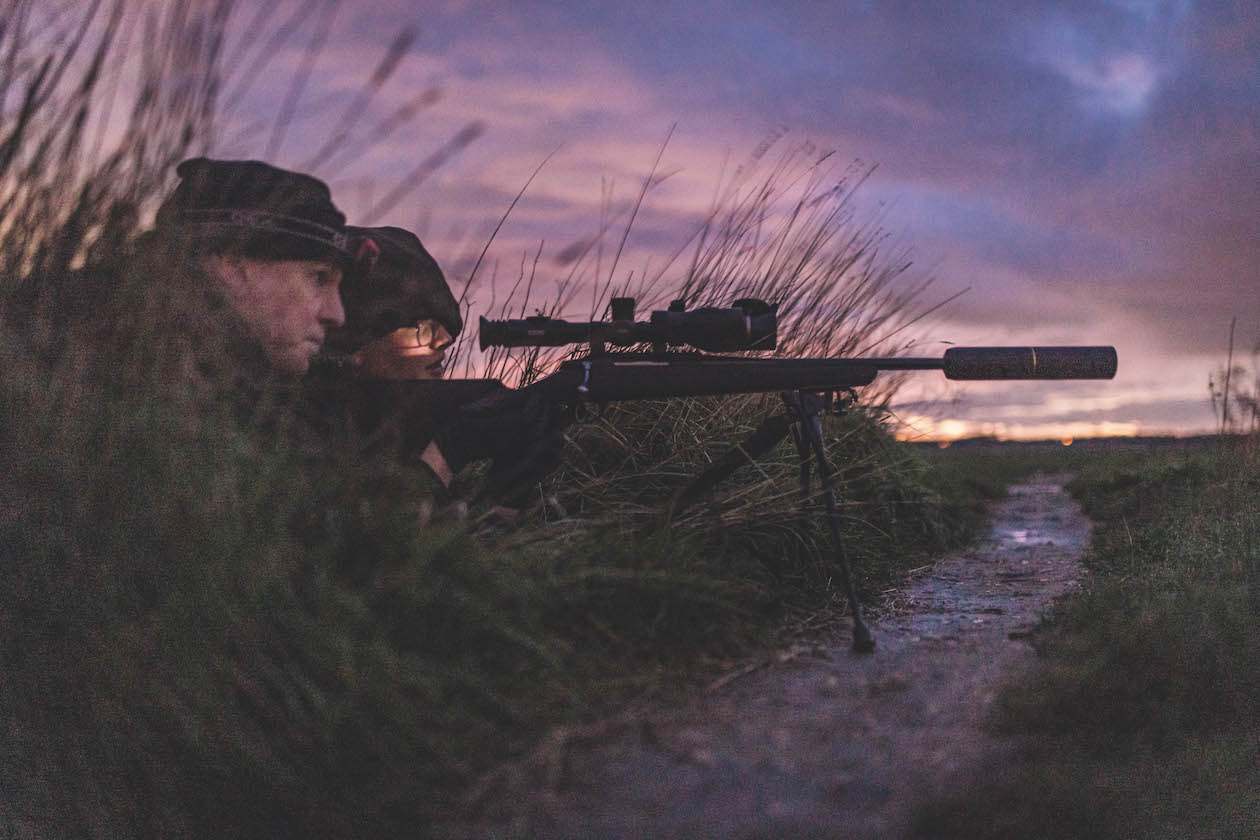
Tracking foxes takes a great deal of time and patience, and sitting for long periods will chill your core
As we moved on slowly into a stinging squall, our next set of glinting eyes belonged to a pair of muntjac, again on the woodland edge. They both observed us warily at the far end of a row of pear trees where the orchard joins the coppice. They seemed to believe that stillness would be their best defence. In this case, it was a safe decision and allowed us the opportunity to observe them as they watched us. After a few minutes, we moved on and they too trotted away.
At the sea wall we took up the natural fire position afforded by the embankment and allowed some minutes to let the sights, sounds and smells of the marshes become familiar. With the choppy waters at low tide, a full expanse of mud and saltings was exposed.
Channel markers blinked their warnings. The lights of the port glowed in the east. The heady brew of seaweed, shellfish and pungent black mire was heavy in our nostrils.
I used a red spotlight to scope the tideline, picking out rocks and rivulets, islands and inlets. On the water’s edge, a pair of red eyes glowed back. I cut off the torch and whispered to Liz what I’d seen.
It’s common to find foxes working the water’s edge and the high tideline. This one was advancing slowly from left to right, pausing now and then, slowly rooting out titbits and morsels. In only a few weeks, some of the greatest calorific rewards will be in the form of nesting waders’ eggs. I slipped the bolt down. (Read more on the best hunting lamps.)
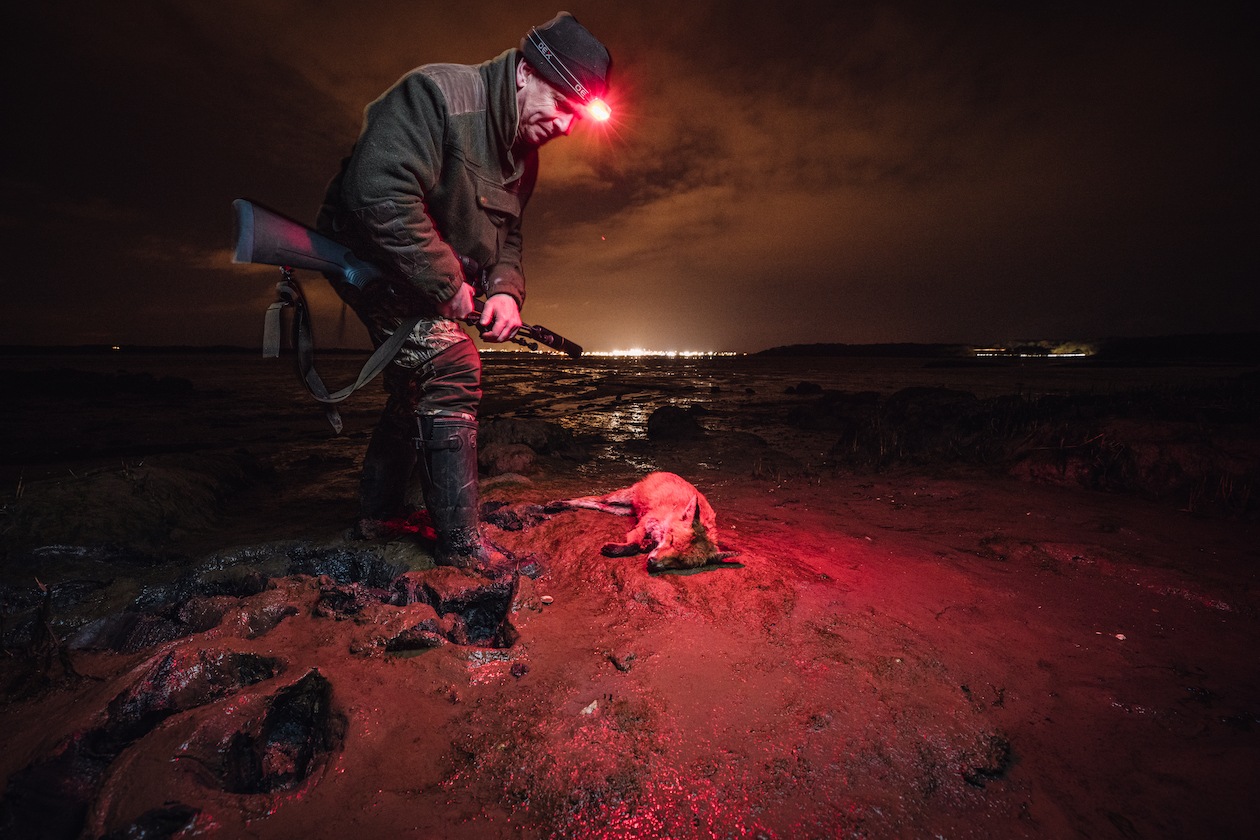
This large dog fox was hunting crabs along the shore – but it will now hunt no more
Thump
A sucking, squeaking sound through pursed lips and front teeth made the fox stop and turn. A slight adjustment of the shoulder and left hand brought the upper crosshairs — set at eight-times magnification — on to the centre of the visible mass. A squeeze of the trigger finger, a crack. The slightest of muzzle movements. The thump of a round hitting its target.
“It’s down. Wait and watch.”
Liz was cold and so was I. The wind in our faces was slipping into jackets and up sleeves, chilling first our extremities and slowly cooling our cores.
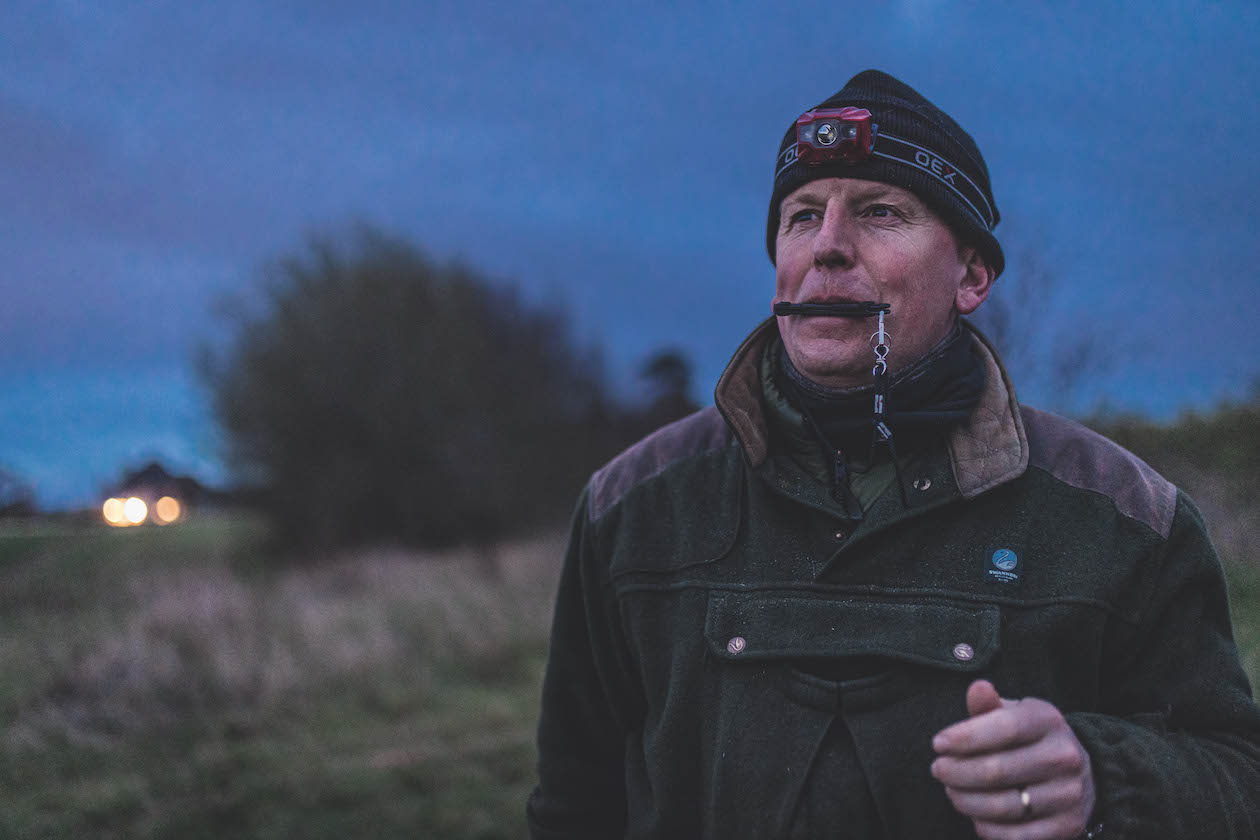
Simon uses a Savage Island fox call
I dropped off the sea wall and on to a familiar track across the creek on to the mud. Laid out in front of me at a distance of about 140 yards was a mature dog fox. His back and head were dark red, with silvery hind legs and a patch of mange on his rear right hip. Whether it was the same creature we’d seen earlier in our garden, I’ll never know. If so, he wouldn’t be troubling the hens again.
Related Articles
Get the latest news delivered direct to your door
Subscribe to Shooting Times & Country
Discover the ultimate companion for field sports enthusiasts with Shooting Times & Country Magazine, the UK’s leading weekly publication that has been at the forefront of shooting culture since 1882. Subscribers gain access to expert tips, comprehensive gear reviews, seasonal advice and a vibrant community of like-minded shooters.
Save on shop price when you subscribe with weekly issues featuring in-depth articles on gundog training, exclusive member offers and access to the digital back issue library. A Shooting Times & Country subscription is more than a magazine, don’t just read about the countryside; immerse yourself in its most authoritative and engaging publication.



